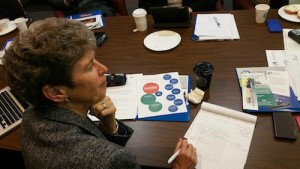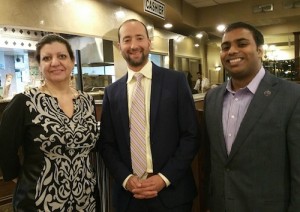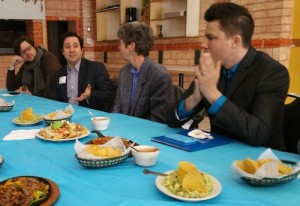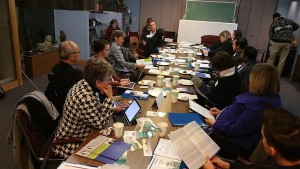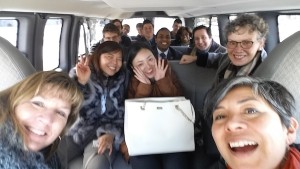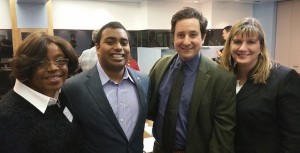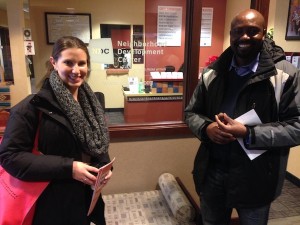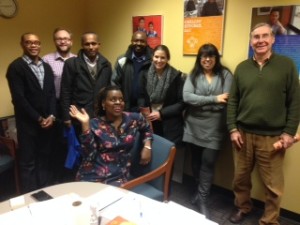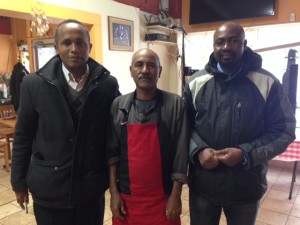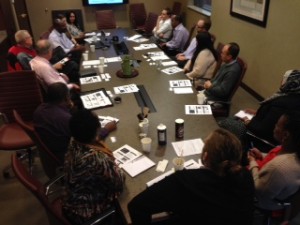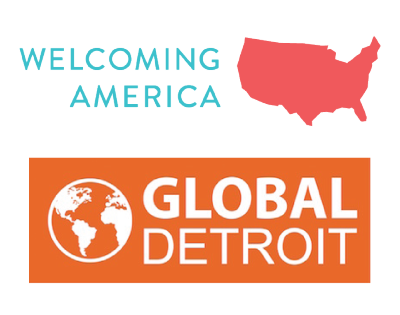This past week, the Fiscal Policy Institute, in conjunction with the America’s Society and Council of the Americas (AS/COA) released groundbreaking new research about the importance and prevalence of America’s immigrants in building and sustaining Main Street commercial retail businesses. While only 13 percent of America, immigrants make up fully 28 percent of the owners of “Main Street businesses,” defined as retail, accommodation and food services, and neighborhood service businesses.
 More specifically, immigrant entrepreneurs own 58 percent of dry cleaners, 53 percent of grocery stores, 38 percent of restaurants, 32 percent of all clothing stores, 28 percent of department and discount stores, and 25 percent of electronics, radio, television, and computer stores. In short, this research suggests that as planners, government leaders, nonprofits, foundations, and others seek to develop and implement strategies to revitalize Rust Belt and Midwest cities, neighborhoods, and communities, as well as to continue the growth of downtown commercial districts, they had best consider the role that immigrants play, can play, and will play. Anything less is to turn one’s back to a significant source of investment, risk-taking, ingenuity, hard work, and opportunity.
More specifically, immigrant entrepreneurs own 58 percent of dry cleaners, 53 percent of grocery stores, 38 percent of restaurants, 32 percent of all clothing stores, 28 percent of department and discount stores, and 25 percent of electronics, radio, television, and computer stores. In short, this research suggests that as planners, government leaders, nonprofits, foundations, and others seek to develop and implement strategies to revitalize Rust Belt and Midwest cities, neighborhoods, and communities, as well as to continue the growth of downtown commercial districts, they had best consider the role that immigrants play, can play, and will play. Anything less is to turn one’s back to a significant source of investment, risk-taking, ingenuity, hard work, and opportunity.
These immigrant-owned Main Street businesses earn $13 billion annually, provide a critical source of first jobs for many in the American workforce, and “play an important role in generating neighborhood-level economic growth by making these areas attractive places to live and work,” according to the report.
On Wednesday, January 14, WE Global Network organizations from Detroit, Minneapolis/St. Paul, and Philadelphia attended the release of the study in New York City, including a roundtable discussion between the study’s author David Kallick and representatives from the three metros that received more in-depth treatment and analysis—Minneapolis/St. Paul, Nashville, and Philadelphia. The report compares 2000 and 2013 Census data noting that immigrants accounted for 48 percent of overall growth of business ownership in the U.S. during this time and all of the growth in Main Street business in 31 of the country’s 50 largest metropolitan areas and an impressive share of the increase in the remaining 19 areas. The number of immigrant Main Street business owners increased even in the seven metro areas (of the nation’s 50 largest) that saw an overall decline in Main Street business owners (such metros include Detroit, Birmingham, Columbus, Cleveland, Milwaukee, Providence, and Pittsburgh).
The study highlights the work of two WE Global Network core organizations—the Neighborhood Development Center (NDC) in Minneapolis/St. Paul and the Welcoming Center for New Pennsylvanians in Philadelphia. NDC is recognized for its culturally competent, comprehensive micro-enterprise training, lending, and incubator development work, including its Islamic law compliant, Reba free, loan fund. The Welcoming Center is praised for its work with entrepreneurs and neighborhood revitalization groups, including its work to diffuse racial and ethnic tensions in Philadelphia neighborhoods.
The WE Global Network has worked with the study’s author, David Kallick, who serves as the Director of Immigrant Research Initiative at the Fiscal Policy Institute, since our initial convening launching the Network in Detroit in June 2013. Traditionally, David has been helpful in tempering our descriptions of immigrant entrepreneurialism, critiquing our language about immigrant exceptionalism. Given our dialogue about the numbers, it was somewhat surprising and very encouraging to see such bold conclusions by the report. One should feel very confident in the study’s conclusions by such a rigorous researcher.
In addition to documenting the incredible impact immigrant Main Street businesses have had on American cities and neighborhoods, the report makes some important recommendations for local and state government, including:
- Establish a climate of welcoming
- Create a government office to address immigrant integration
- Provide a culturally competent business training and services
- Make sure programs are open to all
- Be attentive to the challenges undocumented immigrants face
- Take advantage of the valuable services refugee resettlement agencies offer
- Make financing innovative and community-based
- Link financing to training and business support
- Establish some incubators, especially commercial kitchens
- Improve licensing and inspections for everyone
- Use place-based development strategies to help Main Street businesses build neighborhoods
- Expand the reach of chambers of commerce and trade or interest groups
- Help manage cultural and economic tensions
- Pay attention to wages for workers
The significance of the study was highlighted in a Wall Street Journal story on it. We look forward to discussing the study’s contents and suggestions at the Third Annual Convening in Dayton. The importance of immigrants to the Main Street businesses of the Rust Belt and Midwest is evident in the winners of our Network’s “A Day in the Life of Immigrant Entrepreneurs” which features several Main Street business owners. In the coming months, we will continue to highlight the implementation of the strategies recommended by the report.

